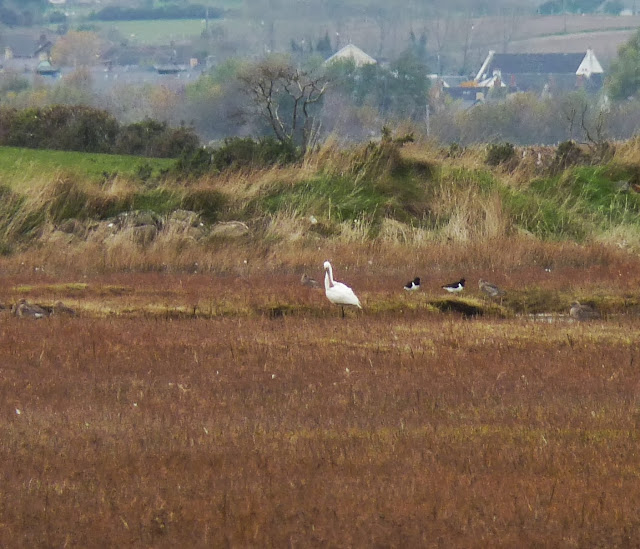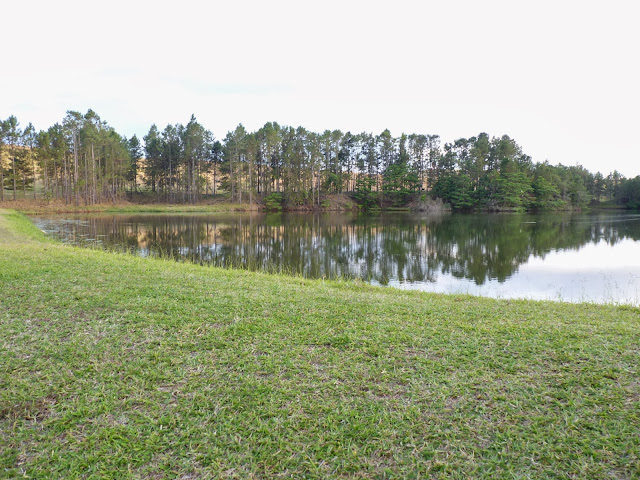For my Saturday's post I am going to tell you the story of the
Pale bellied Brent goose (Part 1)
and I may take several posts to complete it. In Northern Ireland we have Pale bellied Brent and that is mainly the ones I will be showing you.
One of the main areas that they arrive at is Strangford Lough which is a large sea loch
or inlet in Country Down, Northern Ireland. It is separated from the Irish Sea
by the Ards Penninsula. The name Strangford is
derived from Old Norse: Strangr-fjorðr meaning
"strong fjord";
describing the fast-flowing narrows at its mouth. It is called Loch Cuan in Irish, meaning "calm lough" (describing
the still shallow waters
of the mud flats)
Pale bellied Brent Geese
There are 3
forms of Brent Geese.
1. Dark-bellied - nominate
2. Light-bellied – hrota
3. Black Brant – nigricans
1. Pale bellied Brent - form B.b.hrota, which breeds in Spitsbergen, Canada and Greenland has pale grey-brown underparts.
The Brent
Goose is smaller and much darker overall than the other 'black geese' and has a
shorter, thicker neck, marked in the adults by a little white smudgy half collar.
From a distance they can look all dark apart from the gleaming white under-tail
area. The pale-bellied form looks much cleaner and more attractive.
Length: 60cm
Voice: Flocks of
Brent Geese produce deep rumbling, almost purring, sounds audible at great
distances.
Sexes
similar.
Ageing: Juvenile
similar to adult, but head, neck and breast a duller brownish-black. Juveniles
lack the white neck patch of the adults. Full adult plumage attained during
first summer.
2. The Dark-bellied Siberian form B.b.bernicla has slate grey underparts. Dark-bellied
Brents occur widely on the East and South coasts of Britain, best seen at sites
such as Cley on the north Norfolk Coast.
3. Brant - The American and eastern Siberian race B.b.nigricans is blacker with contrasting white flanks and very raely seen in the UK.
Food
Previously
fed exclusively on estuarine plants such as Eel Grass and seaweeds but has now
adapted to feed on crops such as barley, wheat and oilseed rape. Occasionally
takes molluscs and similar foodstuffs.
All 3 forms love eel grass -
They are all -:
Marine living
Very long distance migrants
5000Km round trip
Population increase from 20 - 40 thousand
Terrestrial feeding
Above and below Brent feeding in Iceland
That is
their 1st staging ground and there are 24 sites. This is a crucial staging site and
researchers are not only tagging, and counting the birds they are looking at
their bellies to see how big they are.
By this they know how much fat resources they have for moving on and the
possibilities of having a good breeding year.
In Iceland they will find lots of Zostera beds to feed and fatten up
on. Female birds always put on more
weight than males as they need it more for breeding and migragation. They also take blood samples from all birds
and this enables them to know what food they are been eating over the last
month and what sites they were feeding at.
Then
by May/June they fly to Greenland and they reach Eastern Queen Elizabeth
Islands, Canada by July where they start breeding.
Eggs: 3-5
Incubation: 24-26 days
Maximum lifespan: 19 years
Length: 56-61cm
Wingspan: 110-120cm
Weight: 1,300-1,600g
Ireland wintering: 34,000 birds
Incubation: 24-26 days
Maximum lifespan: 19 years
Length: 56-61cm
Wingspan: 110-120cm
Weight: 1,300-1,600g
Ireland wintering: 34,000 birds
The
Brent geese pair for life. In the Canadian Arctic they nest within 10km of the
coast. They mainly nest colonially close to water in small groups on coastal
islets or small islands within inland lakes
 They
make a small scrape in the gravel, on the south side of rocks were the snow is
melting. They lay their eggs and when
they are hatched the chicks only weigh 100g.
However 2 weeks later they weigh 1 Km.
That is a hugh growth but it is a very short breeding season. The main predators are the Artic foxes and
some Polar bears. By the time the Brent
are ready to leave for their wintering ground, they weigh 1.4 Kilos.
They
make a small scrape in the gravel, on the south side of rocks were the snow is
melting. They lay their eggs and when
they are hatched the chicks only weigh 100g.
However 2 weeks later they weigh 1 Km.
That is a hugh growth but it is a very short breeding season. The main predators are the Artic foxes and
some Polar bears. By the time the Brent
are ready to leave for their wintering ground, they weigh 1.4 Kilos.
The Brent
Geese feed mostly on vegetation but molluscs, crustaceans and lugworms are
taken. A wide variety of plants are grazed or torn or pulled up underwater or
when drifting. Plants covered by the tide are taken by up ending or swimming
with the head and neck below the water. At low tide rhizomes are exposed or
loosened from mud by grubbing and trampling. In the breeding grounds of the
arctic food includes algae, mosses, lichens and the stalks of grasses and
herbs. Winter feeding is on mudflats where it favours eel grass and
cultivated fields of winter cereals and oil seed rape.
In August and
September they fly back, with their young, to their winter home at Strangford
Lough, Northern Ireland, a round trip of 9,000 miles. During the trip the birds
face many dangers, including hunters, predators, bad weather and 3,000-metre
ice mountains in Greenland.
Now I have a short video that can be accessed at
http://youtu.be/gy1rCSHuJCk
If there is a black space below, click it and the video will appear.
Now I think that is enough for today. I hope you enjoyed the Brent Geese and as I am on holiday at present and do not have the time to make part 2 at the moment, so I will keep it until next Saturday's post.
Many thanks for visiting and for your comments.


























































